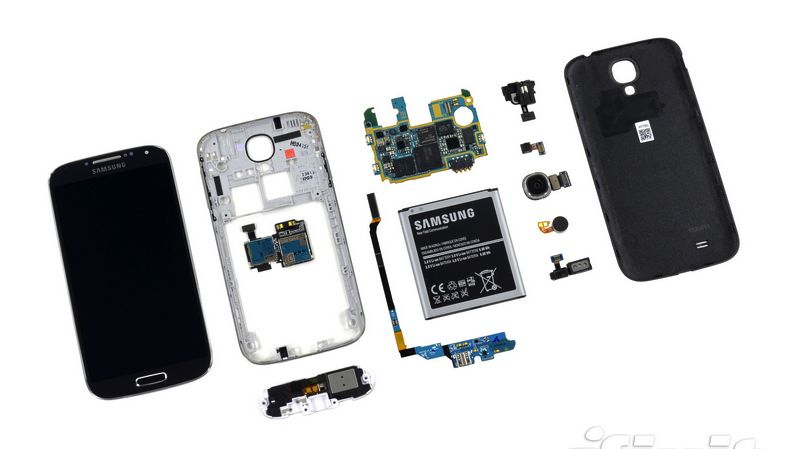Samsung Galaxy S4 easier to repair than HTC One, iPhone 5

A phone these days can't properly make it to customers without an iFixit teardown, and the industrious folks at the site wasted no time breaking into the Galaxy S4.
Let's just say, it got a big thumbs up from the iFixit crew.
When all was said and done, the S4 walked away with a high-five worthy eight out of 10 on the reparability scale.
That compares to the one out of 10 bestowed on the brilliant yet unfixable HTC One and one more point than the iPhone 5. The whole reverse-repair was so straightforward, the entire S4 iFixit guide is one perusable page long.
'I passed!'
The S4 needed no tools to take of the back panel, while the battery was a quick snap away from exiting and entering the device, meaning consumers shouldn't have to slap it against their palms or do whatever other methods they employ to extract the 2,600mAh juicer.
Peeling off the layers of the S4 was relatively effortless, and as many components are modular in nature, users need just replace something like a kaput microSD card instead of swapping out their phone entirely.
There were parts stuck together with adhesive, so iFixit knocked it's reparability score for those. The screen's glass is fused to the display and display frame, which while not a big surprise would lead to more charges in a fix-it job.
Sign up for breaking news, reviews, opinion, top tech deals, and more.
Check out Samsung's
to discover loads more about the infinite possibilities of the GALAXY Note II
However, the relative straightforwardness of the phone's components make this Galaxy easy to navigate and, at the end of the day, easy to repair.
Now, happy smashing! No, wait, please don't do that.

Michelle was previously a news editor at TechRadar, leading consumer tech news and reviews. Michelle is now a Content Strategist at Facebook. A versatile, highly effective content writer and skilled editor with a keen eye for detail, Michelle is a collaborative problem solver and covered everything from smartwatches and microprocessors to VR and self-driving cars.